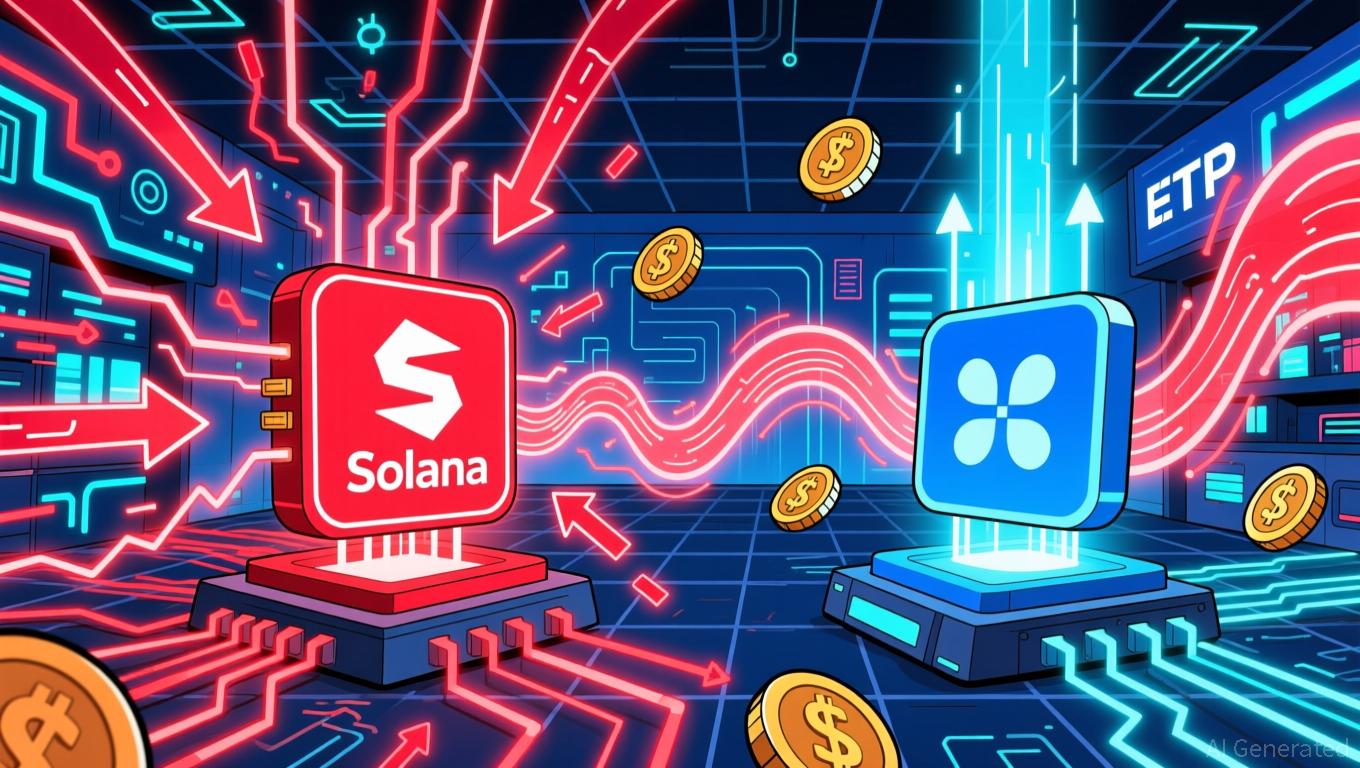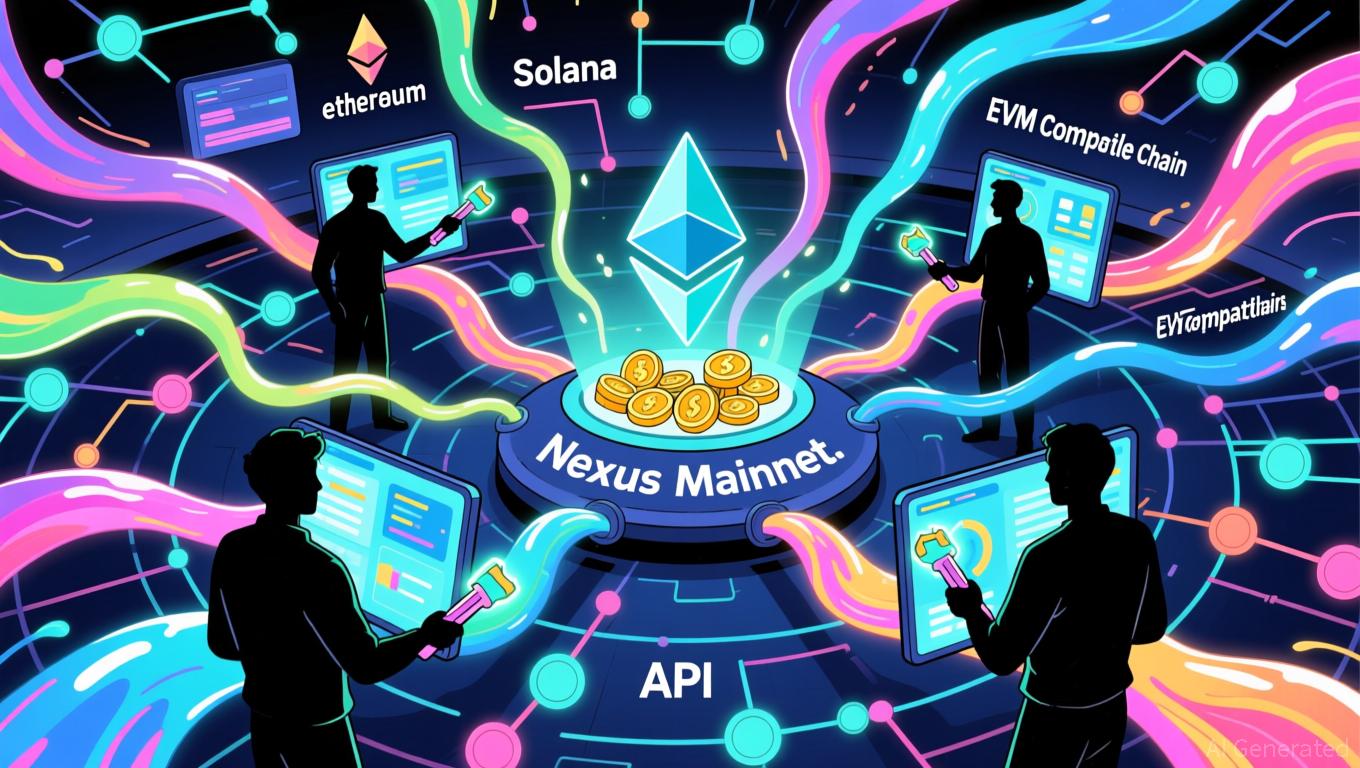Ethereum’s PeerDAS Strategy: Achieving Scalability While Preserving Decentralization
- Ethereum’s blob storage surge strains home staking and scalability, with validator requirements rising to 70GB and projected to hit 1.2TB. - Vitalik Buterin proposes PeerDAS to distribute blob storage via probabilistic sampling and erasure coding, reducing centralization risks. - Phased upgrades (BPO fork, 2024-2026) incrementally increase blob limits while testing PeerDAS, aiming for 100k TPS via DAS and L2 compression. - The "Surge" roadmap prioritizes decentralized data availability, balancing scalabi

Ethereum is facing mounting data storage issues as the use of on-chain blobs rapidly increases, sparking worries about the practicality of home staking and the network’s ability to scale over time. On-chain analyst Hildobby reports that
Buterin’s PeerDAS proposal is designed to spread the responsibility of storing blobs across the network, so no single node is overloaded. This system uses probabilistic checks, where nodes request small segments of data to confirm that over half of the total data is accessible. Erasure coding is used to recover any missing information, which eases storage needs while preserving data reliability Vitalik Buterin Outlines Scalable Solution for Ethereum’s Data Surge [ 1 ]. Still, Buterin notes that full block data is required during initial distribution or when rebuilding, stressing the importance of “honest participants” to perform these tasks. The network’s defense against bad actors comes from redundancy, as other nodes can step in if some data is lost or tampered with Vitalik Buterin Outlines Scalable Solution for Ethereum’s Data Surge [ 1 ].
The Ethereum core team is moving forward with PeerDAS through a series of gradual upgrades to minimize potential risks. The first step, the Blob Parameter Only (BPO) fork scheduled for December 17, 2024, will raise blob targets from 6/9 to 10/15 per block. Another fork planned for January 7, 2026, will further increase these limits to 14/21. This step-by-step approach lets developers observe network behavior and fine-tune parameters as needed, ensuring a balance between scalability and stability Vitalik Buterin Outlines Scalable Solution for Ethereum’s Data Surge [ 1 ]. Buterin anticipates that these changes will encourage greater blob usage, paving the way for future expansions and allowing Ethereum’s base layer to eventually process all execution data through blobs Vitalik Buterin Outlines Scalable Solution for Ethereum’s Data Surge [ 1 ].
Buterin’s broader vision for Ethereum, detailed in his blog, aims to scale the network to 100,000 transactions per second (TPS)—a dramatic leap from the current 173.6 TPS with blobs or 607 TPS with calldata. Essential technologies include Data Availability Sampling (DAS), L2 data compression, and generalized Plasma using SNARKs. DAS, which employs both 1D and 2D sampling, boosts throughput while keeping the network decentralized. At the same time, L2 compression methods like signature aggregation and address streamlining are intended to shrink the amount of data stored on-chain Ethereum’s Surge Roadmap Targets 100,000 Transactions Per Second [ 2 ]. Together, these advancements tackle the challenge of balancing security, decentralization, and throughput by using cryptographic proofs and distributed validation Ethereum’s Surge Roadmap Targets 100,000 Transactions Per Second [ 2 ].
Buterin’s insights highlight the importance of peer-reviewed, trustless mechanisms for Ethereum’s continued development. The gradual rollout of PeerDAS and BPO forks demonstrates a careful approach to scaling, with a focus on maintaining network reliability over rapid growth. By spreading data availability checks throughout the network, Ethereum seeks to avoid centralization while keeping L2 costs manageable. This approach fits within the larger “Surge” roadmap, which also features “The Verge” (simplified block verification), “The Purge” (reducing storage), and “The Splurge” (further enhancements). Collectively, these stages are intended to transform Ethereum from a network handling 15–30 TPS to one capable of processing hundreds of thousands of transactions per second Ethereum’s Surge Roadmap Targets 100,000 Transactions Per Second [ 2 ].
Ethereum’s progress depends on overcoming technical hurdles and striking a balance between innovation and security. As blob adoption accelerates, the effectiveness of PeerDAS and related upgrades will be crucial in determining if the network can maintain decentralization while scaling to meet rising demand. Both developers and the wider community are watching the December 2024 BPO fork closely, seeing it as a key milestone for Ethereum’s future in a world where blockchain data needs are ever-increasing Vitalik Buterin Outlines Scalable Solution for Ethereum’s Data Surge [ 1 ].
Disclaimer: The content of this article solely reflects the author's opinion and does not represent the platform in any capacity. This article is not intended to serve as a reference for making investment decisions.
You may also like
Ethereum News Update: Amundi’s Integrated Approach Connects Blockchain with Conventional Financial Regulations
- Amundi, Europe's largest asset manager, launched its first Ethereum-based tokenized money-market fund, enabling 24/7 settlements and transparent record-keeping via blockchain. - The hybrid model, developed with CACEIS, combines traditional fund operations with blockchain-based ownership, preserving regulatory compliance while expanding investor access. - Ethereum's dominance in stablecoin and RWA transfers ($105.94B in 30 days) underscores its role in accelerating tokenization, with Amundi positioning it

XRP News Today: XRP ETFs Drive Price Increases, While Solana ETFs Ease Selling Pressure
- XRP ETFs raised $587M in inflows since late November, outpacing Solana's $568M as investors favor altcoins with regulatory clarity and utility. - Bitwise XRP ETF's $107M debut and zero-fee strategy drove momentum, while Solana ETFs faced $156M weekly outflows due to network reliability concerns. - XRP's inflows acted as a "battering ram" pushing prices above $2.27, contrasting Solana's ETFs which merely dampened sell pressure without reversing its decline. - Analysts predict XRP could reach $3 by Decembe

The Federal Reserve's Change in Policy and Its Impact on Alternative Cryptocurrencies Such as Solana
- Fed's 2025 policy shifts, including rate cuts and stablecoin regulations, are reshaping altcoin markets by altering liquidity and risk appetite. - Solana's Alpenglow upgrade (150ms finality, 1M TPS) addresses scalability issues, aligning with Fed's AI-driven infrastructure focus despite network reliability concerns. - Institutional inflows into Solana ETFs ($100M AUM) contrast with retail caution (78% HODLers in red), highlighting divergent risk perceptions amid 30% price corrections. - Divergent ETF flo

Avail's Intent-Driven Nexus Addresses the Issue of Fragmented Liquidity Across Chains
- Avail launches Nexus Mainnet, a cross-chain solution unifying liquidity across Ethereum , Solana , and EVM networks. - The intent-solver model enables seamless asset transfers without technical complexities, streamlining user experiences. - Developers gain modular tools for multichain integration, reducing costs as cross-chain liquidity demand grows. - Nexus abstracts execution layers, offering unified balances and execution while addressing fragmentation challenges. - With $50B+ in cross-chain activity
